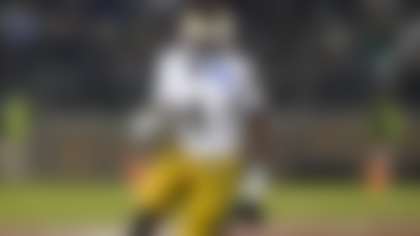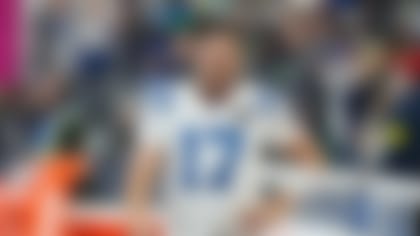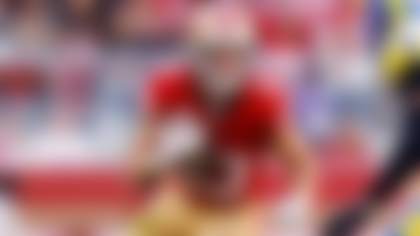With the 2011 season in the rearview mirror, it's time for NFL.com's annual "Exit Interviews," a chance to review the ups and downs of each team's past season and spin it forward.
2011 in a Nutshell: What a mess. The Jags traded up to draft Blaine Gabbert and he was the one rookie quarterback who really struggled when he got a chance to play. Head coach Jack Del Rio got fired, ownership changed and Jacksonville's end result reflected all the turmoil. The offense was abysmal, averaging a little over 15 points a game. If it wasn't for running back Maurice Jones-Drew and a vastly improved defense, the Jags could be picking first overall instead of seventh.
What Went Right: The defense, under the guidance of coordinator Mel Tucker, was vastly improved -- to the point that the Jaguars had the chance to win most of their games. Jacksonville ranked in the top 10 in most major defensive categories and allowed an average of 20.6 points per game, which is somewhat remarkable considering how frequently the defense was on the field.
Outside linebacker Daryl Smith flourished, as did free agent acquisitions Paul Posluszny and Dawan Landry. Defensive end Jeremy Mincey also provided some much-needed pass rushing with eight sacks. Even with the improved play, the Jags still had just 31 sacks -- an area they've tried to improve for years and likely will address again in the draft or free agency.
Offensively, you can't say enough about Jones-Drew. He was the team's only threat and he still rushed for an NFL-high 1,606 yards. Of the Jaguars' nine rushing touchdowns, he had eight. Production aside, Jones-Drew's professionalism in playing hard every game, despite being in such a dire offense, shows his commitment to the game and his team. You just have to hope that his years of toil are rewarded soon with some playoff appearances.
What Went Not So Right: The passing game, overall. Much of the shortcomings hinge on Gabbert, who didn't seem to improve much and reverted back to some of the concerns teams had about him coming out of Missouri: he feels imaginary pressure and is inaccurate on intermediate and deep routes.
Gabbert completed just better than 50 percent of his passes with 12 touchdowns and 11 interceptions. He was sacked 40 times, so there were protection issues, and the offensive line continues to be a work in progress. However, he stepped into some of those sacks because of the pressure he seemed to feel that wasn't always there.
Stop if you've read this before: The Jaguars didn't have a legitimate receiving threat. Tight end Marcedes Lewis plummeted back to earth with just 39 catches and zero touchdowns after 58 catches and 10 touchdowns in 2010. His numbers should improve under new head coach Mike Mularkey, who loves to involve tight ends in the passing game.
Wideout Mike Thomas led the Jags with 44 receptions. Jones-Drew was second with 43. That won't translate to playoff appearances.
Offseason Crystal Ball: Mularkey and his offensive staff will have an offseason to refine Gabbert. Keep in mind, Gabbert didn't have an offseason in 2011. Mularkey did a great job of masking Matt Ryan's flaws as a rookie in Atlanta, but he also had a stud wideout in Roddy White and a lot of other options to ease the pressure.
Brooks: WR/TE prospect rankings
In today's pass-happy NFL, receivers and tight ends are crucial. Bucky Brooks ranks prospects at each position. **More ...**
It would not be a surprise if Mularkey and general manager Gene Smith added at least one wide receiver and tight end, probably via free agency. Offensive production will be a priority and so much of the offseason will be Mularkey plotting what he wants to do around his talent. He is flexible in that regard, but the offensive play-calling will remain conservative.
Team Needs and Draft: Jacksonville isn't going to bail on Gabbert a year after drafting him, but it has to protect itself with veteran depth and possibly draft a quarterback in the middle rounds. Acquiring a solid locker room vet like Jason Campbell might not be a bad idea unless Campbell thinks he can have a shot to start elsewhere.
Jacksonville has to add at least one wide receiver in the draft, either with the seventh pick or within the first three rounds. New owner Shahid Khan will want to make some sort of splash and if he can somehow draft Oklahoma State's Justin Blackmon, that would be a huge and marquee upgrade.
Falcons free-agent wide receiver Harry Douglas could be an inexpensive target who is familiar with Mularkey's system and is someone that has a lot of potential to make plays for a young quarterback like Gabbert.
Jacksonville has to find a pass rusher and that's where the first-round pick could come into play. North Carolina's Quinton Coples will be discussed early on, but other prospects could move ahead of him by the draft. A cornerback or offensive tackle also might be worthy of the first pick.
Mincey is a free agent and the Jaguars need to re-sign him. He's someone that fits in Tucker's scheme and Jacksonville doesn't have much else. The Jags need to upgrade their D-line, and it wouldn't be a bad idea for them to get into the bidding for Colts free-agent defensive end Robert Mathis, a player who has tormented them for years.
Follow Steve Wyche on Twitter @wyche89.



